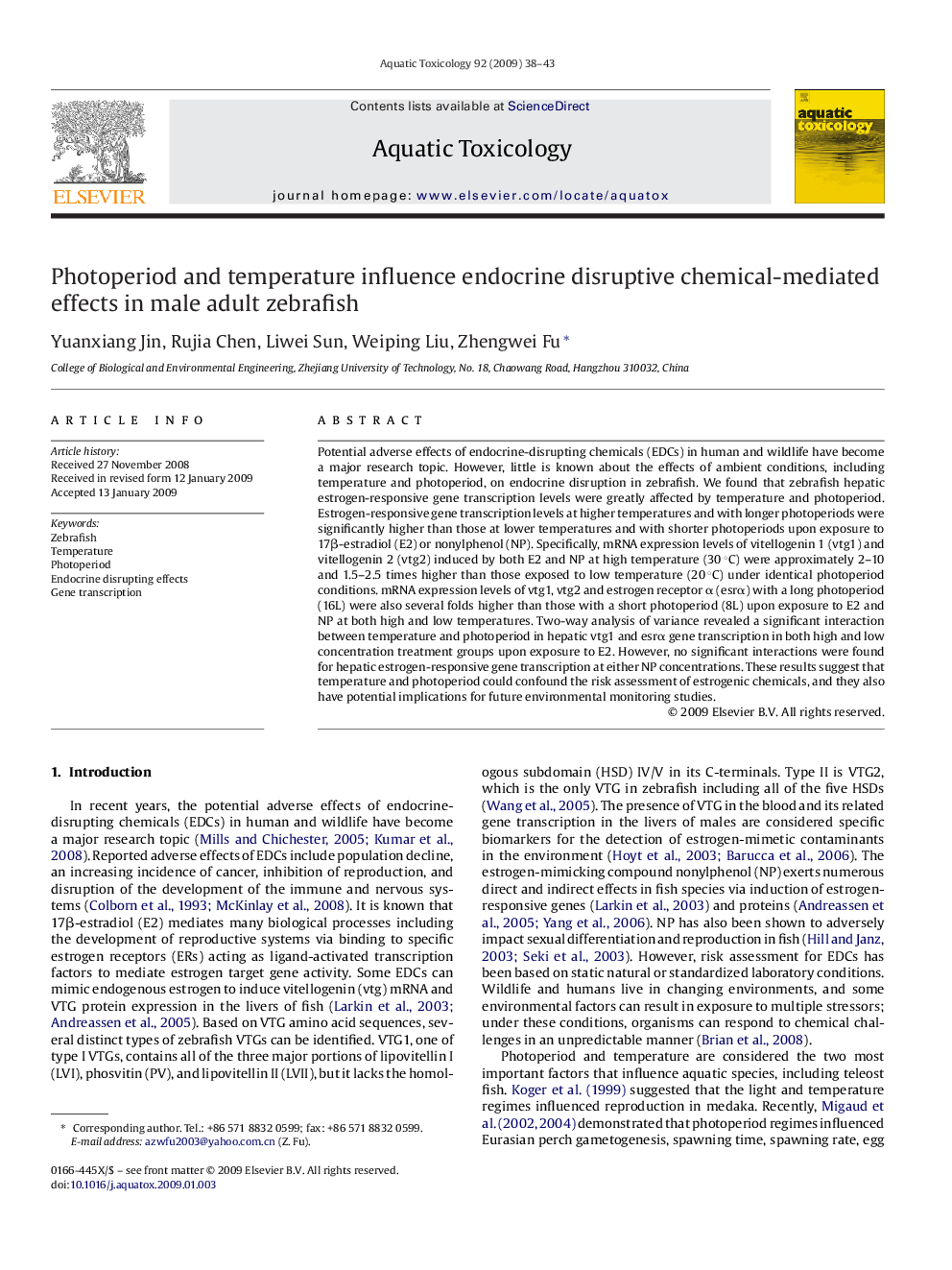| Article ID | Journal | Published Year | Pages | File Type |
|---|---|---|---|---|
| 4530633 | Aquatic Toxicology | 2009 | 6 Pages |
Abstract
Potential adverse effects of endocrine-disrupting chemicals (EDCs) in human and wildlife have become a major research topic. However, little is known about the effects of ambient conditions, including temperature and photoperiod, on endocrine disruption in zebrafish. We found that zebrafish hepatic estrogen-responsive gene transcription levels were greatly affected by temperature and photoperiod. Estrogen-responsive gene transcription levels at higher temperatures and with longer photoperiods were significantly higher than those at lower temperatures and with shorter photoperiods upon exposure to 17β-estradiol (E2) or nonylphenol (NP). Specifically, mRNA expression levels of vitellogenin 1 (vtg1) and vitellogenin 2 (vtg2) induced by both E2 and NP at high temperature (30 °C) were approximately 2-10 and 1.5-2.5 times higher than those exposed to low temperature (20 °C) under identical photoperiod conditions. mRNA expression levels of vtg1, vtg2 and estrogen receptor α (esrα) with a long photoperiod (16L) were also several folds higher than those with a short photoperiod (8L) upon exposure to E2 and NP at both high and low temperatures. Two-way analysis of variance revealed a significant interaction between temperature and photoperiod in hepatic vtg1 and esrα gene transcription in both high and low concentration treatment groups upon exposure to E2. However, no significant interactions were found for hepatic estrogen-responsive gene transcription at either NP concentrations. These results suggest that temperature and photoperiod could confound the risk assessment of estrogenic chemicals, and they also have potential implications for future environmental monitoring studies.
Related Topics
Life Sciences
Agricultural and Biological Sciences
Aquatic Science
Authors
Yuanxiang Jin, Rujia Chen, Liwei Sun, Weiping Liu, Zhengwei Fu,
